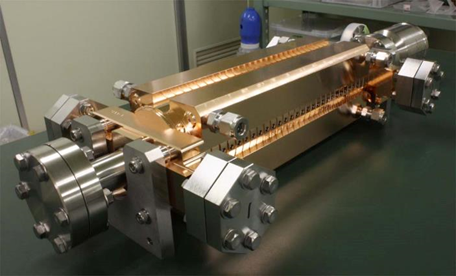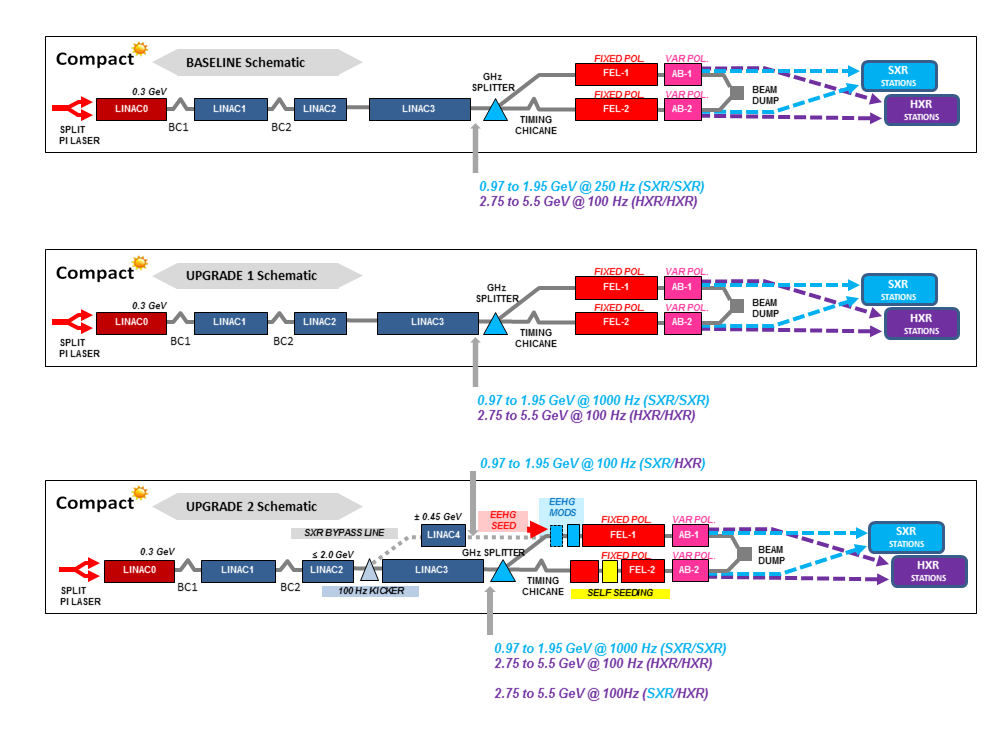
Accelerator System
Accelerator Layout
The CompactLight FEL facility will use a compact C-band photo-injector as an electron gun, and three linacs using normal conductive, high-gradient, X-band accelerating structures.
The figure below shows the facility baseline layout and its foreseen two upgrade stages.
The proposed FEL features great flexibility in order to satisfy the variety of user requirements. The FEL tuning range is achieved by operating the machine in different modes at each of the three presented scenarios. The common features of the three configurations are:
- twin bunches from the photo-injector sitting in near-consecutive RF buckets, separated by hundred's of ps, for the simultaneous operation of two FEL lines, thus driving either FEL-pump FEL probe experiments at a single end-station, or experiments at two distinct end-stations;
- acceleration in X-band linacs and double magnetic bunch length compression;
- emission of soft x-rays from a low energy (<2 GeV) electron beam at high repetition rate, either 250 Hz or 1 kHz, and emission of hard x-rays from high energy (> 2.8 GeV) electron beam at low repetition rate (100 Hz);* the spectral separation of the twin pulses (either the two soft x-ray pulses or the two hard x-ray pulses) relies on the independent gap tuning of the two (identical) undulator lines, while different polarization adjustment is provided by tuning of the afterburners;
- the temporal separation of the two FEL pulses goes from perfect synchronization to ±100 fs, at the end-station.
The baseline layout is able to generate two synchronized either soft or hard x-ray photon pulses in Self-Amplified Spontaneous Emission (SASE) mode; the soft x-rays are emitted at 250 Hz repetition rate. Upgrade-1 increases the soft x-rays repetition rate to 1 kHz by virtue of additional klystron power supplying the accelerating structures, in order to keep the average RF power in the structures constant.
Upgrade-2 adds two features to Upgrade-1:
- soft x-rays can be produced in Echo-Enabled Harmonic Generation (EEHG) mode providing full longitudinal coherence, and hard x-rays in self-seeding mode for much-improved longitudinal coherence compared to SASE;
- soft and hard x-ray pulses can be produced simultaneously and transmitted at the sampling rate of 100 Hz to the same end-station for FEL-pump FEL-probe experiments which implies both soft and hard x-rays can be transported to laser same stations as requested by users.
More details are provided in the Deliverables.


